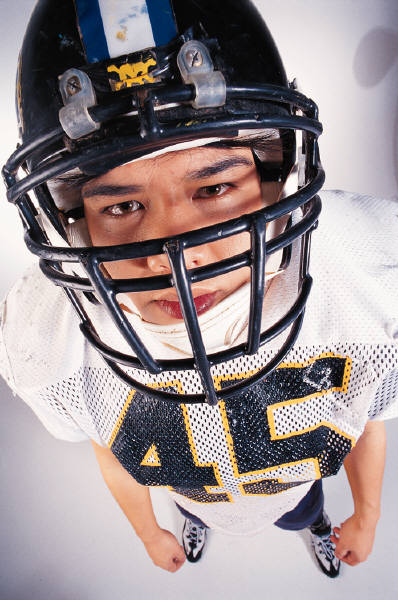This week I read a heartwarming story of a high school quarterback who instinctively knew, and did, the most effective things to stop others from bullying a special needs girl in his school. The girl, Chy Johnson, functions at about a third grade level. Bullies were calling her names, throwing trash at her, and even shoving her in the corridors between classes.
Bullies often target those who, for one reason or another, can’t stop the bullying on their own. Chy’s mother first tried talking to school faculty and staff members. Even if they had intervened (which they apparently did not), that might have exacerbated the problem. It often does.
So Chy’s mother turned to a football player, CarsonJones, who had once escorted her daughter to the Special Olympics. She hoped that, among other things, Carson might come up with some names of the bullies. But Carson realized that calling out the bullies would likely escalate their attacks. As I’ve written before, people resist being made wrong, even when they really are wrong, like these bullies.
Carson did what experts have learned actually works. He “adopted” Chy and inspired the rest of the football team to do likewise. They invited Chy to sit with them at the “cool kids’” table in the cafeteria. They got organized and scheduled football players to walk with Chy in the corridors between classes.
As pointed out in chapter 13 of Bridges to Consensus, when third parties remain silent and inactive in the face of bullying, both the bully and his victim feel that silence means consent. While faculty intervention can actually backfire, support for the victim by a critical mass of those who disapprove of the bullying works better, and it did so in Chy’s case. The bullying of this child stopped.
Adults, too, can be bullied. They have their own special set of problems. Bystanders, and even the victim himself, are less likely to recognize bullying for what it is when it is not physical and targets adults whom people assume capable of defending themselves. Unfortunately, this happens in nonprofit and volunteer organizations, to the detriment of all.
Bridges gives the example of a minister placed in a no-win situation by a clever and subtle grown-up bully. The bully does not express his real reasons for turning against the minister. Nor does he complain to the minister herself. Instead, he levels birdshot attacks—a host of minor complaints—to other members of the congregation in unofficial “parking lot” conversations. This creates a dilemma for the minister:
If the critic senses defensiveness, which can read as weakness to him, he feels emboldened to escalate the criticism. On the other hand, if he feels counterattacked, he not only escalates, but garners allies as well. Neither defensiveness nor counterattack work well, especially for a minister.
If she simply ignores the complaints, other congregants, who hear only the critic’s side of things, may agree with him. Moreover, the victim’s silence can be misconstrued. The minister may be seen as cavalier or uncaring. She must, people think, be determined to stubbornly keep on doing what she’s doing without taking others’ concerns into account.
Of course, the victim can try to speak to the critic, using consensus skills, but many factors can work against the success of such an effort. She might not become aware of the criticism until much damage has been done among the other members of the congregation. The critic may not open up to her about what’s really driving the criticism, either because he doesn’t own it even to himself, because he doesn’t want reconciliation but rather to punish the minister, or for other reasons. He might discuss a host of other little peeves, leaving the stealth interest under cover. Or he may refuse to speak to the minister at all.[1]
This is why a critical mass of others in the group should learn respectful, minimally wrong-making, but effective, ways of communicating to the bully that they will not fall for his attempts to unfairly or unreasonably whittle away at his victim.[2]
Meanwhile, we can all teach the children we know that they can become leaders by encouraging their friends to simply show acceptance and kindness to the kids who get picked on. If the bullying threatens to get physical, all it may take is a number of third parties silently placing themselves between the bully and his victim. This action is empowering for both the victim and the interveners. And it deters, rather than escalating, further bullying by the perpetrator.


This is a timely topic for me, with a horrific verbal assault just a week old. I felt embarrassed that I was not able to shield myself nor get myself away..or see it coming in the first place. I tried disarming using techniques I had learned from you, but I should have thrown up a protective shield instead. Learning to differentiate when someone is just interested in spewing hate at a target (who unwittingly stepped into what must be a hornet’s nest of pain and suffering for this man) and when someone is available for healthy conversation I suppose is my next step. I was caught totally off guard.
I feel for you, Julia. No matter how much skill we have, it is always upsetting to walk into something like that. I admire your ability to let it inspire you to learn more.